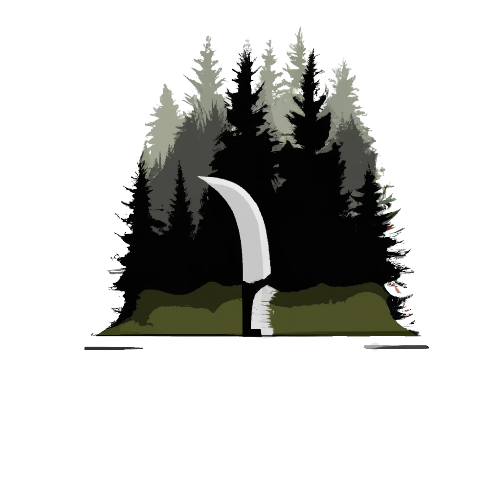D2 and 440C are two steels that are very similar and are used for very similar tasks. Both steels are often used by the same knife companies and both steels can be found in the same price range. So which steel is better? Let’s find out.
Here is the short answer:
The difference between D2 and 440C is that D2 has better edge retention and better wear resistance. However, 440C has better corrosion resistance and is easier to sharpen. It is mostly personal preference. If you need better edge retention, go for D2. Better corrosion resistance, choose 440C.
Now that we have looked at the short answer we can look in depth at each steel, compare both steels to see which one is better, and see what the best knives in each steel are.
D2
D2 is a tool steel that is used by many different companies because of its ability to hold an edge, its great wear resistance, and its toughness. D2 is a great steel for the price that can be used for almost all knife applications.
As mentioned earlier, D2 is a tool steel meaning that it is used in tools. This is a good thing because for a steel to be used in tools means that it is tough and very wear-resistant.
The only downside to D2 is that it is not very corrosion-resistant. While D2 is considered a stainless steel, it is actually not that corrosion-resistant. D2 is a steel that does not do well in wet environments so it will need to be oiled on a somewhat regular basis.
Here is what D2 is made of:
- carbon: 1.5%
- Chromium: 12%
- Vanadium: 0.9%
- Molybdenum: 0.8%
- Magnesium: 0.45%
- Silicon: 0.4%
- Sulfur: 0.02%
Each component of the steel does different things: Carbon increases strength and edge retention, chromium will increase corrosion resistance and edge retention, vanadium will increase wear resistance, sulfur and manganese–much like carbon–will increase strength, and silicon will have the same effect as manganese but to a lesser extent.
440C
440C is a steel that is known for great corrosion resistance, the ability to have a fine edge, and fairly good toughness.
440C’s best upside is that it is very corrosion-resistant. 440C is a steel that will not rust easily and can be used in humid or wet environments without the worry of your knife rusting. If you are in a situation where you need a knife that will not rust–no matter what you do to it–this is the knife steel for you.
The biggest downside to 440C is its edge retention. While 440C can get a very fine edge on it, it is not the best at holding an edge
Here is what 440C is made of:
- Carbon: 0.95-1.20%
- Chromium: 16.00-18.00%
- Molybdenum: 0.75-1.00%
- Nickel: 0.50%
- Vanadium: 0.10-0.30%
- Manganese: 0.75%
- Silicon: 1.00%
- Phosphorus: 0.04%
- Sulfur: 0.03%
Which steel is better?
Now that we have looked in depth at each steel we can compare the two to see which one is better.
When it comes to corrosion resistance 440C is the better steel. 440C is a steel that is very high in chromium which is the main contributor to corrosion resistance. D2 just doesn’t have the ability to hold up to corrosion, especially when compared to 440C.
If you are looking for edge retention it depends on what task you are using your knife for. If you need a fine edge on your knife (i.e. cutting through soft objects or skinning animals), then you will want 440C. But if you want sheer edge strength for cutting through tough surfaces you will want D2.
Wear resistance-wise, D2 is the better steel. D2 is super wear resistant. So if you are in a situation where you will benign cutting through tough material and you don’t want your knife to be worn out fast then you will want D2.
The best knives in each steel
Now that we have looked in depth at each steel and we compared the two steels, we can look at the best knives in each steel.
SOG Aegis (D2)
The SOG Aegis is a knife that is very high quality and will work for any task you want it to. My favorite part of the Aegis is its stout assisted opening that ensures your knife will open every time. If you are looking for a new EDC knife that is very reliable, this is the knife for you.
Check out this knife here (link to Amazon)
Buck Knives Skinner (D2)
The Buck knives Skinner is a knife that works great for not only hunting but all kinds of fixed blade tasks. I have used the Skinner for not just hunting but also bushcraft and wood working. If you want a good all-around fixed-blade knife this is the knife for you.
Check out this knife here (link to Amazon)
Gerber Randy Newberg DTS knife (440C)
The Gerber Randy Newberg DTS knife is a replaceable blade hunting knife that is razor sharp and guaranteed to work on any game animal. The DTS has a reflective handle so you will never lose your knife in the dark, comes with mutable extra blades, and has a D2 smaller blade for cutting through tendons or bones. If you hate having to resharpen your knife in the field this is the knife for you.
Check out this knife here (link to Amazon)
Conclusion
Both steels will work for most knife tasks, but there are certain situations where you would want one over the other. It pretty much boils down to this: If you are looking for corrosion resistance, go with 440C, if you are looking for toughness or wear resistance go with D2.

